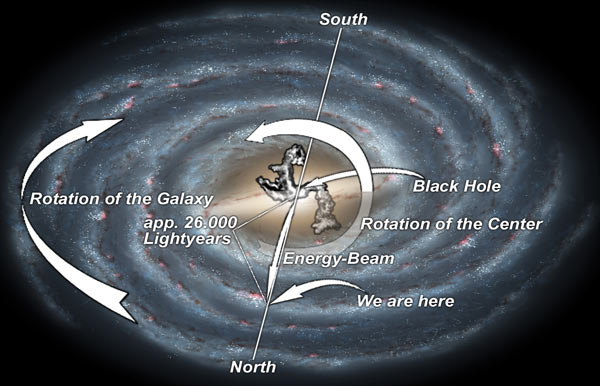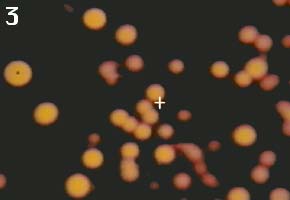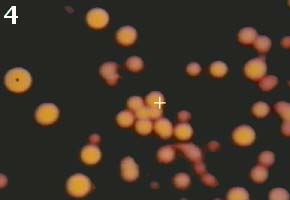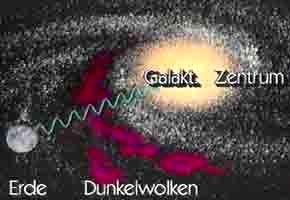 |
Astro-Science |  |
|||||
| Om-page |
|
||||||
|
Content
|
|||||||
| Recorded in Infrared Wavelength |
|||||||
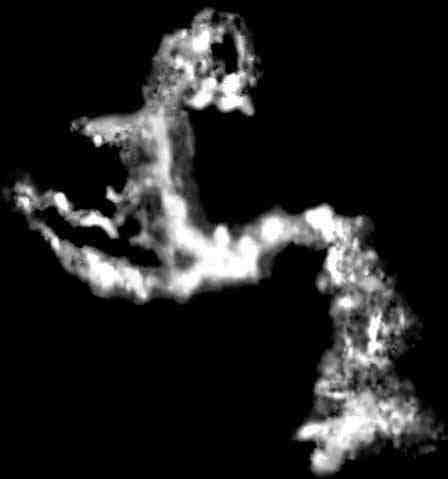 |
|||||||
In March 21. 2009 I wrote this "Theory of Energy from the Galactic Center" The people of the nation of the Maya some thousand of years ago had the awareness of the greater cosmic cycles and measured them with their calendar. They also knew the source of the strongest cycles or waves - Hunab Ku - the center of our Milkyway galaxy. These days more and more scientists are adapting their worldview to the cyclic nature of existence and are presenting proof of this paradigm shift. In Germany the scientist Dr. Dieter Broers has got a lot of attention with his interview in the mainstream magazines. He is stating that scientists discovered a ray of energy coming from the deepest domains of space. He says the Mayans called it a "synchronizing ray", coming from the galactic center, and that it is already realigning planet earth and thereby us humans. He is also saying that NASA is actually detecting these rays for already 15 years. Within the last couple of years the energy of these rays has multiplied many times and is getting stronger by the day. This "Change" (note that the word change is the key concept that is conveyed here) is leading to a transformation of our consciousness or even to a quantum-jump in our development. Astrophysicists are confronted with a huge mystery at this point and I think I can help them here, if any of this is true what scientists claim to have detected. When I have discovered that the OM-symbol as a representation of the galactic center which is equally true for the Mayan symbol Hunab Ku, it is proven that ancient cultures had a galactic consciousness of the cycles of time and where we are located in our galaxy. What I further have discovered is that the orientation of the galactic center in space relative to our solar system is in a peculiar position, unlike to most galaxys that we can observe! This discovery will explain all the effects we are now experiencing. The galactic center is a rotating black hole with a surrounding disk comprised of stars and dust, shaped like the well known OM-symbol. The point I am making here is that this disk is visible head-on meaning that it is not rotating at the same angle as the disk-shaped Milkyway-galaxy. Since we can see the rotating galactic center head-on and not from the side as it would if it were at the same plane like the rest of the galaxy we can assume that it is tilted at an almost 90 degree angle relative to the galactic plane. What does this mean? The black hole inside this disk is a rotating sphere with a north- and southpole like every other spinning ball or globe. What is a special feature of a black hole is that it is emitting a strong jet of gamma-rays, neutrinos and all kinds of energies and particles from both poles and as we here on Earth are facing the northpole of the black hole. We are now showered to an ever increasing degree with those energies. See also my visualisation. The axis of the black hole is wobbling back and forth, up and down, just like when you are watering a patch of flowers with a garden hose. This is only pure logic, derived from observation, you do not have to be an astrophysicist to get to those conclusions. I now enjoy the confirmation of my theories from "established" scientists and I can further explain their discoveries. In any way, the predictions of the Mayans, scientists, channelers and the prophets and their holy books are hinting to this special occurrence in space and time. What I assume is that the polarities in many aspects of our existence are expanded to the maximum and are probably until the winter solstice of 2012, like described by Terance McKenna in his 'Timewave Zero' leading to a transforming event that can quicken mankind forward to a galactic consciousness. Some call it Apokalypse from the Greek word for revelation, lifting the veil, manifestation, for it may be revealed who we really are, where we really are and what else is going on in the Universe. That is why the "Revelation" is anticipated with so much fear by many. I just came across an article: "Mystery Hum puzzles geologists". Could it be that this hum is because planet earth is resonating with the energies coming from the center of our galaxy due to the fact that the OM-symbol has also a sound/vibration/energy associated to it. It is produced due to the fast-moving atoms, planets, stars and galaxies. This sound was perceived during meditation by Rishi Vishvamitra thousands of years ago, who mentioned it to other colleagues. All of them then unanimously decided to call this sound OM, the name of God, because this sound is available in all the three conditions of time, hence it is "sat" (permanent). This "universal OM-Tone" is the gravitational frequency of the smallest Black Hole of unity and of the quantumfrequency of the photons on it's gravitational circle and corresponds with the tone Cis (135,57 Hz) und is named the "Sound of Unity". Now lets go back to the ray that is entering the solar system now at this time: the ancient vedic Rishis and the Mayans knew that the calibration of the galactic center with our solar system will happen periodically due to the synchronous movements of both systems. Some are waiting for the solar system to enter a "Photon Belt" which is only another way of describing that approaching energy, ending the so called "Kali Yuga", the dark iron age.
My theses are: Neutrinos |
|||||||
| Recording in radio wavelength | |||||||
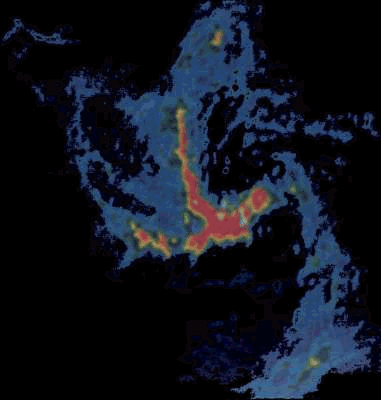 |
|||||||
| Unambiguous Evidence for Monstrous Black Hole at Center of Our Galaxy |
|||||||
Presented by UCLA Astronomer Andrea Ghez Date: September 7, 1998 Answering one of astronomy's most important questions, UCLA astronomer Andrea Ghez reported today at a conference in Tucson, Ariz., that a monstrous black hole resides at the center of our Milky Way galaxy, with a mass of about 3 million times that of our sun. In her research, Ghez used the 10-meter Keck I Telescope - the world's largest optical and infrared telescope - atop Mauna Kea in Hawaii to study the movement of 200 stars that are close to the galactic center. Ghez studied these stars each year since 1995, using a technique she refined called "infrared speckle interferometry." "Black holes cannot be seen directly, but their influence on nearby stars is very visible and provides a signature," said Ghez. "We have found that signature in the rapid movement of the 20 or so stars that are most affected by its gravitational influence." These 20 stars are orbiting ever closer to the black hole at a blinding speed of up to three million miles per hour -- about 10 times the speed at which stars typically move. The rapid speed at which the stars closest to the galactic center are moving reveals that the mass of the black hole - 3 million solar masses - must be concentrated in a single object, she said. The star that was closest to the black hole in 1995 has since disappeared. Ghez has a number of possible theories to explain its disappearance, ranging from the mundane to the exotic. One explanation for observing a bright source in only one image, Ghez said, is that it was a "gravitational lensing event," which |
occurs when the light path from a star passing behind the black hole is bent by the strong gravitational field of the black hole. Alternatively, it could have been a flare due to a star falling into the black hole. Ghez, however, acknowledges that scientists may never learn which theory is correct***. The center of the Milky Way was identified in 1968 by Eric Becklin, a UCLA professor of physics and astronomy. Its general location in the galaxy is known, but not its precise location. The center of the Milky Way is located due south in the summer sky. The black hole at the center of our galaxy came into existence billions of years ago, perhaps as very massive stars collapsed at the end of their life cycles and coalesced into a single, supermassive object. Ghez studied the stars closest to the galactic center to observe the movement of these stars. She has been able to accurately predict the locations of the stars closest to the galactic center. Ghez has the highest resolution images of the galactic center ever obtained, which allow precise measurement of a group of stars close to the galactic center. Keck's large diameter allows Ghez to see fine details and to position the stars - details which were crucial in establishing the existence of the supermassive black hole. ***OM-mans theory: maybe we can learn from neutrino emissons, faster than light, what happened. Or, even keeping in mind the distance of about 24000 LJ, there could be an effect due to no-time tunneling of a neutrino-scalarwave (which could even correspond to the effects of the postulated "Photon Belt"). |
||||||
| I found the following on the website of David Wilcock but this link does not work anymore. (www.divinecosmos.com/cms/content/view/13/27/SUN) The
Sun’s magnetic field is over 230 percent stronger now than
it was at the beginning of the 1900s, and its overall energetic
activity has sizably increased, creating a frenzy of activity that
continues to embarrass NASA’s official predictions. thunderbolts.info/tpod/2005/arch05/051024plasmoid.htm Recent infrared and x-ray views of our galaxy’s core have revealed a plasma torus (doughnut-shaped ring), or plasmoid, less than two light-years across. Because dust blocks visible light, viewing the core has not been possible until the advent of telescopes that can "see” infrared and x-ray light, which can penetrate dust. The x-ray radiation from the plasmoid is typical of that given off by highly excited stars, indicating extremely strong electrical stress. The strong electrical field in the plasmoid acts as a particle accelerator. Electrons accelerated to high speeds will spiral in a magnetic field and give off x-rays. They also give off x-rays when they pass near a heavier ion. The plasmoid also accelerates ions—primarily hydrogen and helium nuclei—to high speeds. The ions collide and fuse to build up heavier nuclei. This accounts for the plasmoid’s observed enrichment in oxygen and iron. The plasmoid is the "generator” that powers the intermittent ejections from a galactic core. In a galactic circuit, electrical power flows inward along the spiral arms, lighting the stars as it goes, and is concentrated and stored in the central plasmoid. When the plasmoid reaches a threshold density, it discharges, usually along the galaxy’s spin axis. This process can be replicated in a laboratory with the plasma focus device. The discharge forms a jet of neutrons, heavy ions, and electrons. The neutrons decay to form concentrations of matter that appear as quasars. Electromagnetic forces confine the jet to thin filaments that remain coherent for thousands of light-years. The jet usually ends in double layers that extend for many times the size of the galaxy and radiate copiously in radio frequencies. The diffuse currents then flow toward the galaxy’s equatorial plane and spiral back toward the core. A core plasmoid was first discovered in the Andromeda galaxy, our neighbor and possibly our "mother”. With this discovery of the plasmoid at the core of the Milky Way, we can expect similar discoveries for all nearby galaxies. Driving Forces of the Milky Way The core of our galaxy is a region full of mysteries, including flares that can brighten the central area by a factor of four in a few days or by a factor of two in forty minutes. From an electric universe point of view, this is the most active expression of the electric power of the Milky Way. Dust veils most of the core of the Milky Way from optical observations, but today's radio, infrared, ultraviolet and x-ray telescopes uncover intriguing images and data about the activity at the center of our home galaxy. It's a region full of mysteries, including the remnants of an unexplained hyper-explosion a few thousand years ago and flares that can brighten the central area by a factor of four in a few days or by a factor of two in forty minutes. From an electric universe point of view, this is the most active expression of the electric power of the Milky Way. This is where currents are focused from the spiral arms down into a tiny donut-shaped plasmoid. From the center of this plasmoid, electric currents spray out from the axis of the galaxy, then return along the spiral arms, inducing magnetic fields and lighting up the stars. The energy stored in the plasmoid is released in prodigious outbursts of high speed particles and radiation, heralded by explosive flares. |
|||||||
| http://www.nasa.gov/mission_pages/chandra/news/08-062.html May 14. 2008 Chandra Uncovers Youngest Supernova in Our Galaxy The most recent supernova in our galaxy has been discovered by tracking the rapid expansion of its remains. This result, using NASA's Chandra X-ray Observatory and the National Radio Astronomy Observatory's Very Large Array, will help improve our understanding of how often supernovae explode in the Milky Way galaxy. The supernova explosion occurred about 140 years ago, making it the most recent in the Milky Way. Previously, the last known supernova in our galaxy occurred around 1680, an estimate based on the expansion of its remnant, Cassiopeia A.
|
|||||||
| up again | |||||||
